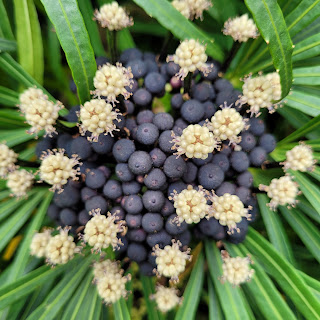Lizards in Lorong Halus Wetlands
Written by: Mr William Teng
Lizards intrigue me. I would not say that I like them but they are rather fascinating to observe. A common lizard is the house gecko which I tend to steer clear of.
Last year's visit to Lorong Halus Wetlands during our Innovation Week provided us with opportunities to observe two species of lizard.
The first one is the changeable lizard (Calotes versicolor), an agamid lizard. 'A key distinguishing feature of agamids is their teeth, which are borne on the outer rim of their mouths (acrodonts), rather than on the inner side of their jaws (pleurodonts)' [1]. This one was found on a cattail in the wetlands, warming itself up.
Photo: Mr William Teng
Many people are probably familiar with house geckos detaching their tails and growing new ones. The agamids generally lack this regenerative ability.
The changeable lizard got its name because it is able to change its colouration. Its ground-colour is generally a light brownish olive, but the lizard can change it to bright red, to black, and to a mixture of both [1].
This lizard is not native to Singapore and was introduced to the country from Malaysia and Thailand in the 1980s [1]. It is a very recent migrant.
The second lizard is a monitor lizard and I think it is most probably the Asian water monitor (Varanus salvator). This is a juvenile who was very sluggish in the rainy and cold morning. Reptiles are poor in regulating their body temperature and this is why you see them basking under the sun to warm up. That said, they will also heat up quite fast under a scorching sun so they have to stay away from it.
Photo: Mr William Teng
In fact, this little fellow was found lying on one of the railings and was too cold to avoid the many students (and me) who took the chance to observe it closely. When the temperature got a little higher, it became more active and wandered off to the grassy areas of the wetlands.
Monitor lizards are pretty common sightings near water bodies like rivers and canals which are common in Punggol and Sengkang. Do not go too close to them lest they become aggressive.
Source:
[1] https://en.wikipedia.org/wiki/Agamidae. Assessed on 31 August 2018



Comments
Post a Comment